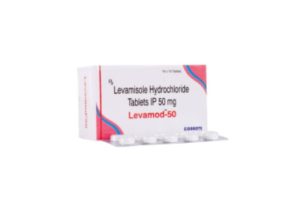
Demeclocycline: Full Review
Demeclocycline is a tetracycline-class antibiotic that is mainly used to treat bacterial infections and for the management of certain non-infectious conditions, particularly SIADH (Syndrome of Inappropriate Antidiuretic Hormone Secretion). While it shares similarities with other tetracyclines like doxycycline and minocycline, demeclocycline is distinct due to its role in treating water and sodium balance disorders.
1. Mechanism of Action
Demeclocycline, like other tetracyclines, works by inhibiting bacterial protein synthesis. It binds to the 30S ribosomal subunit in bacteria, preventing the attachment of aminoacyl-tRNA to the ribosome, thus blocking the addition of amino acids to the growing peptide chain and inhibiting bacterial growth. Demeclocycline is bacteriostatic, meaning it halts bacterial replication rather than killing bacteria directly.
In addition to its antimicrobial effects, demeclocycline blocks the action of antidiuretic hormone (ADH) on the kidneys, reducing water reabsorption. This makes it useful in treating SIADH, where there is excess water retention in the body.
2. Uses
Demeclocycline is primarily used in two major areas:
- Bacterial Infections: It can be used to treat a variety of bacterial infections, including:
- Respiratory tract infections (e.g., bronchitis, pneumonia)
- Skin infections (e.g., acne)
- Urinary tract infections
- Rickettsial infections (e.g., Rocky Mountain spotted fever)
- Certain sexually transmitted infections (e.g., chlamydia, gonorrhea)
- Intestinal infections
- SIADH: Demeclocycline is also used to manage SIADH by reducing the kidneys’ sensitivity to ADH, which helps correct water retention and hyponatremia (low sodium levels). However, this use is off-label, as demeclocycline is not FDA-approved specifically for SIADH.
3. Dosage and Administration
Demeclocycline is typically administered orally, either as tablets or capsules.
- For bacterial infections: The usual dose is 150 mg to 300 mg, taken 2-4 times per day.
- For SIADH: Dosing ranges from 600 mg to 1200 mg daily, divided into two or three doses. The effect on water retention can take several days to manifest.
It is recommended to take demeclocycline with plenty of water and to avoid taking it with dairy products, as calcium can interfere with its absorption.
4. Contraindications
Demeclocycline is contraindicated in:
- Pregnant women: It can affect fetal bone and tooth development.
- Children under 8 years: Demeclocycline can cause permanent teeth discoloration and hinder bone growth.
- Patients with hypersensitivity to tetracyclines.
5. Side Effects
Common side effects of demeclocycline include:
- Gastrointestinal discomfort: Nausea, vomiting, diarrhea, and epigastric pain.
- Photosensitivity: Increased risk of sunburn when exposed to sunlight.
- Teeth discoloration: Especially in children, it can cause permanent yellow-gray discoloration.
- Superinfection: Prolonged use can lead to the overgrowth of non-susceptible organisms such as fungi (e.g., candidiasis).
- Nephrogenic diabetes insipidus: A rare side effect where the kidneys become resistant to ADH, causing excessive urination.
- Hepatotoxicity: Though rare, demeclocycline can cause liver damage, especially with long-term use.
6. Drug Interactions
- Antacids and iron supplements: Containing aluminum, calcium, or magnesium, these can reduce the absorption of demeclocycline.
- Oral contraceptives: Demeclocycline may reduce the effectiveness of hormonal birth control pills.
- Blood thinners (e.g., warfarin): It may enhance the effects of anticoagulants, increasing the risk of bleeding.
- Penicillin: Demeclocycline can reduce the bactericidal action of penicillin.
7. Special Precautions
- Photosensitivity: Patients should be advised to avoid prolonged sunlight exposure and to wear sunscreen.
- Renal impairment: Dose adjustment may be required in patients with kidney problems, as demeclocycline can accumulate and lead to toxicity.
- Hydration: Adequate fluid intake is important to prevent esophageal irritation and ulceration.
8. Resistance
Like other tetracyclines, demeclocycline has seen an increase in bacterial resistance, particularly among Gram-negative bacteria. Resistance mechanisms include efflux pumps and ribosomal protection proteins. However, it remains effective against certain types of bacteria, especially in cases where other antibiotics are ineffective due to resistance.
9. Storage and Stability
Demeclocycline should be stored at room temperature, away from moisture and direct sunlight. Outdated demeclocycline should not be used as it may degrade and become toxic, potentially leading to Fanconi syndrome (a type of kidney disorder).
10. Summary
Demeclocycline is a versatile antibiotic from the tetracycline family, effective in treating a wide range of bacterial infections. Its unique role in managing SIADH adds to its importance in medical practice. However, its use is associated with side effects like photosensitivity and teeth discoloration, and it should be avoided in pregnant women and children under 8.
Because of increasing bacterial resistance, it is essential to use demeclocycline only when indicated and under the guidance of a healthcare provider. For patients with SIADH, demeclocycline can be a valuable off-label option to manage water and sodium imbalances.







